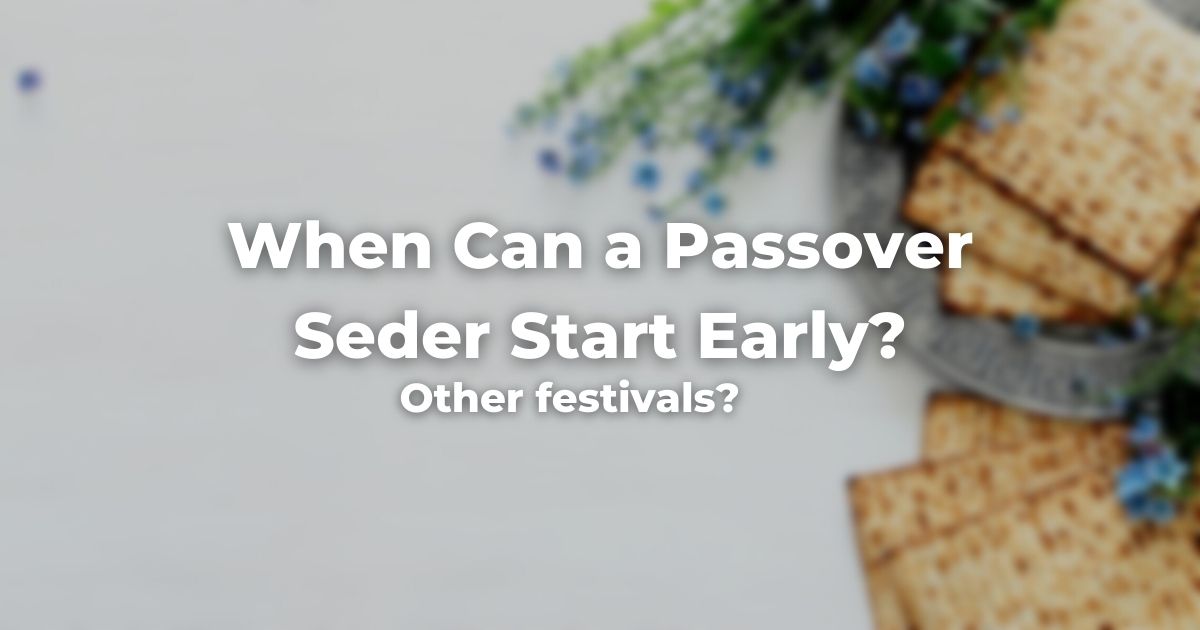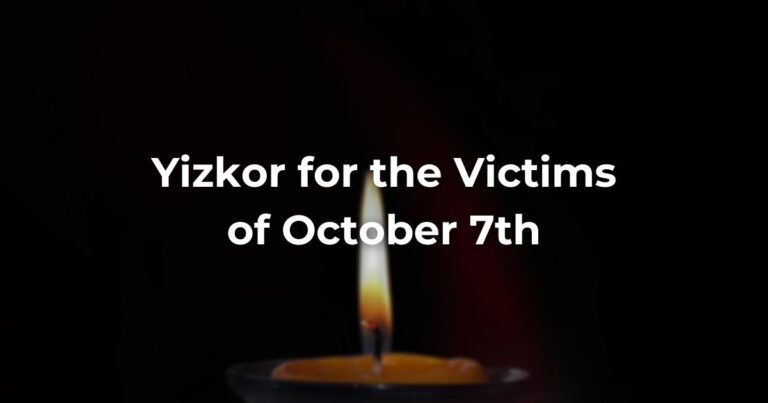One question that comes up every year for Passover seders is: Can we start the seder early?
For many reasons, many people struggle to stay up late or do not want to start their seder, particularly a second-night seder (for those in the diaspora), that late at night.
So what are we to do? According to a CJLS teshuvah written by Rabbi Joshua Heller, there are a few options available to us. You can read his Teshuvah in full and the summary of conclusions below.
The Committee of Jewish Law and Standards, a body of rabbis within the Rabbinical Assembly, have put together a number of rulings and resources for those who want to learn more about this practice.
The most updated resource available is this year’s Passover guide, which you can find here.
In this guide, you will find the status of a number of foods that are and are not classified as kitniyot with specific instructions on what to do. We strongly recommend that you take a look at this guide before making any decisions.
Here are the questions that Rabbi Heller’s Teshuvah explores:
Question: What is the earliest time that one may perform the assorted positive mitzvot and practices of the Jewish festivals, on first or second day of Yom Tov? Must one wait until after sundown, or after dark?
Of particular interest is the Passover Seder, including Kiddush and the other three cups of wine, the recitation of Maggid and Hallel, and eating karpas, maror and matzah. Is there any difference in practice between first and second Seder, or Seder that falls on a Saturday night?
What about other festivals, including Shavuot, Sukkot and Shemini Atzeret/Simhat Torah?
This is how Rabbi Heller answers these important questions as quoted below:
Note: There are further details and it is recommended that one read the teshuvah in its entirety.
“In setting the earliest time for these observances, we are mindful that the Jewish day begins with the evening, which is defined as beginning either with sundown or dark, and in general we err on the side of caution in choosing which one will apply.
It is for that reason that Shabbat and festivals generally begin before sundown and end after dark. When the sources indicate that a mitzvah must be performed at night, it is commonly assumed that after dark is the preferred time.
This approach creates a challenge, experienced most broadly in observance of the Passover Seder, but reflected in our observance of other holidays as well. The Passover Seder is one of the most essential ritual practices of Judaism, exercising both halachic and sociological imperatives…
Beginning a Seder at 9:00 PM or later presents a challenge for many who would want to participate. It creates substantial pressure to rush or abridge Maggid, the telling of the story. In addition, the Seder should be entered with an appetite for the matzah, and many would not be able to maintain an appetite at that hour, or would be forced to eat earlier…
This is not merely an issue of convenience. The halakhic mandate to observing the Seder at the mandated time is often directly at odds with the halakhic mandate for the seder to meet its primary pedagogic and spiritual goals.”
Psak Halakhah/Conclusion:
A. Festivals in General
One may begin the observance of any festival eve (whether first or second day), as early as one would start Shabbat.
In doing so, one may recite Ma’ariv, light candles, recite Kiddush, and begin the festive meal, even if the sun has not yet set by that time. This is true for both the first and second days of Yom Tov, with the following conditions:
1. This ruling does not apply when the first night of a festival begins on Saturday night, because it reduces the sanctity of Shabbat.
2. It always applies to the second day of Yom Tov, even when it begins on a Saturday night, with the limitation that candles may not be lit until Shabbat has ended.
3. If the 2nd day of Yom Tov is begun early, and it is not Shabbat, candles may be lit before dark, but care should be taken to ensure that light actually serves some useful purpose, the classic one being that they be lit in the place where Kiddush is said. (As on any second day Yom Tov, candles must be lit from a pre-existing flame.)
4. The earliest universally accepted start time is plag haminhah, (about 75 minutes before sundown), and this would suffice for many communities. If one follows Rabbi Barry Leff’s reading of the Terumat HaDeshen, one might start even earlier, but this leniency would not apply to Seder.
B. For Seder, the following approaches could be considered depending on circumstances, and are listed in order of preference:
1. The stringent approach:
If it is within the capacity of all attending to participate fully in a Seder beginning after dark, then this would be the preferred option. Even in such a case, Ma’ariv could be recited earlier so that those attending may be home and ready to start/prepare for the Seder at the appropriate time.
However, in such a situation, one should not eat a significant meal in the hours leading up to Seder, so that one is able to have an appetite for matzah.
One may run a “model Seder” for very small children who will not be able to stay up for the Seder, though this goes against the spirit of the Seder.
2. The “classic” approach:
Begin Seder at any time after plag haminha, timing its performance so that some portion of the telling, and the consumption of matzah and maror, fall after dark.
3. Seder out of order:
Discussion and favorite songs, including Hallel, could be done before nightfall, skipping the most essential elements..
After nightfall, the party would recite a “minimum required Seder” consisting of Kiddush, washing, karpas, and Maggid highlights including the four questions, avadim hayinu, the analysis of arami oved avi, the 2nd cup, and Rabban Gamliel’s presentation of the meaning of the ritual foods. Of course, the actual consumption of matzah and maror would take place after dark as well.
4. The most lenient approach:
Begin Seder at any time after plag haminha, working under the assumption that tosefet Yom Tov means that acceptance of the Yom Tov means that it is now the appropriate time for performance of all night-time rituals, including matzah and maror.
C. Applications to other festivals:
1. One may begin a Sukkot meal in the sukkah before the first sundown of Sukkot, but it is preferable to eat some portion of the meal there after sundown.
2. One need not wait until after dark to begin Shemini Atzeret, though if one eats the festive meal before dark, one should perform Kiddush and Hamotzi in a sukkah (without the blessing over sitting in a sukkah), even if it is not normally one’s practice to eat in the sukkah on Shemini Atzeret
3. Services for the first night of Shavuot need not be postponed until after nightfall (though communities may still choose to do so in the interests of the logistics of Tikkun Layl Shavuot).
4. Except on Saturday night, evening Megillah reading may be begun before dark, after plag.
Author
-

Exploring Judaism is the digital home for Conservative/Masorti Judaism, embracing the beauty and complexity of Judaism, and our personal search for meaning, learning, and connecting. Our goal is to create content based on three core framing: Meaning-Making (Why?), Practical Living (How?), and Explainers (What?).
View all posts





